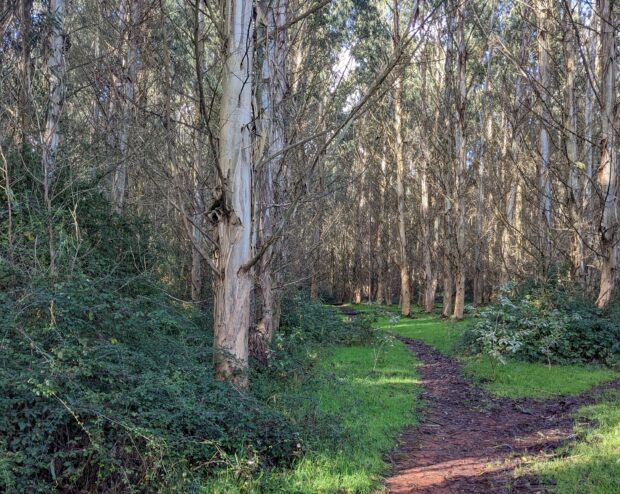 Ian Tubby, Head of Policy and Advice at the Forestry Commission, and Joe Watts, Head of Sustainable Forestry, highlight some key changes to the UK Forestry Standard.
Ian Tubby, Head of Policy and Advice at the Forestry Commission, and Joe Watts, Head of Sustainable Forestry, highlight some key changes to the UK Forestry Standard.
The 5th edition of the UK Forestry Standard (UKFS) came into full effect on 1 October 2024. We’ll explain what this means for you, highlight some of the key changes and tell you how to find out more.
It feels like only a few weeks have passed since we introduced the 5th edition of the standard. It’s difficult to believe, but we have now reached the end of the 12-month transition period from the 4th edition.
The basics of UKFS
The UKFS is a technical standard for managing forests across the UK, and applies to all woodland, regardless of who owns or manages it. It’s designed to apply to all kinds of woodlands, from timber plantations to conservation habitats.
It’s not an auditable standard or a ‘gold standard’. The document occupies the space between the law and the conditions of specific grants and certifications. By using current evidence bases, it helps to address the most significant risks to our woodland.
The standard is intended for professional foresters such as forest owners, managers, practitioners, regulators and advisors.

The end of the transition period
We published the 5th edition of the UKFS last year and introduced a 12-month transition period. This period gave users time to understand the new edition and to complete forestry plans and proposals that were already in development.
The transition period has now ended. From 1 October 2024, grant scheme and regulatory applications received by the Forestry Commission will be assessed against the 5th edition of UKFS.
We want to minimise any disruption and delay to applicants, so grant applications and regulatory approvals received before 1 October 2024 will be assessed using the 4th edition of the UKFS. Existing approvals under the 4th edition remain valid.
This means:
- there is no need for grant agreements or management plans in place before 1st October to be updated to comply with 5th edition
- Environmental Impact Assessments received before 1st October will be evaluated with the 4th edition
- we will not revisit decisions already made on Woodland Creation Planning Grant (WCPG) funded designs that progress to England Woodland Creation Offer (EWCO) applications

Changes to the standard
The UKFS was first published in 1998. It uses a series of internationally agreed criteria and indicators as the basis. In fact, you can trace the standard back to commitments made at the 1992 Earth Summit.
While the principals and ethos of the standard haven’t changed, it has been reviewed to ensure that it’s kept up to date.
The 5th edition:
- reflects changes to legislation in one or more of the countries of the United Kingdom
- encourages owners and managers to accelerate efforts to mitigate the impacts of climate change, deer, pests and diseases on woodlands
- contains guidance on reducing the impacts of deer
- includes requirements for tackling pests that have arrived in the UK. This includes removing dead and stressed spruce where Ips typographus may be present
- talks about bison and beavers, which are being introduced into woodlands to improve habitat and water management
- introduces new or significantly improved Good Practice Requirements which tackle issues such as species diversity, flood risks and waste management

How to use the UKFS
To get the most out of UKFS it should be read and applied ‘in the whole’. In some cases it refers to country specific guidance that is tailored to prevailing site and soil conditions in that country. Professional expertise and judgement are needed to get the most from the standard.
If you’re developing an application, make sure you show your working and the logic behind your plans and proposals. We’ll consider your objectives, evidence and the impact of your proposal.

We're happy to help
Please get in touch if you are confused by changes to the 5th edition of UKFS, or are unsure of how the standard will be implemented. Contact your local Forestry Commission office and we will do our best to help you.
In any case, we like hearing from you in the early stages of planning woodland management operations or developing a woodland proposal. Early dialogue often makes grant or regulatory processes much smoother. It also helps us to better understand your objectives and the potential of your site.
You can read the 5th edition of the UK Forestry Standard on GOV.UK.


